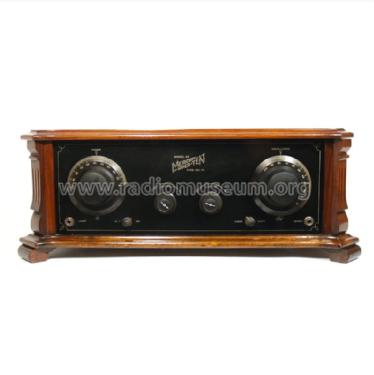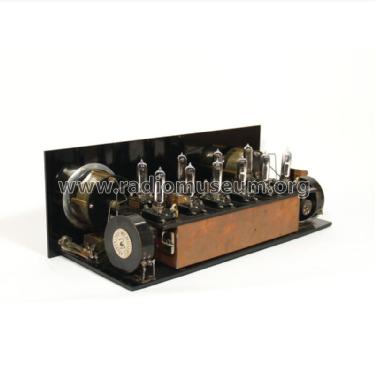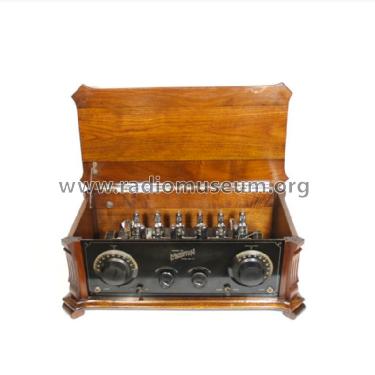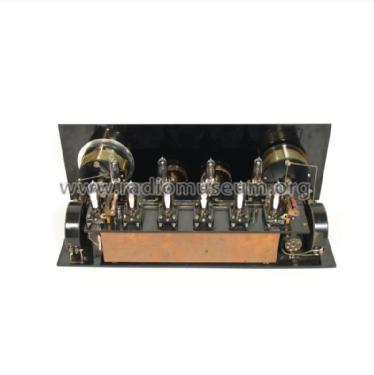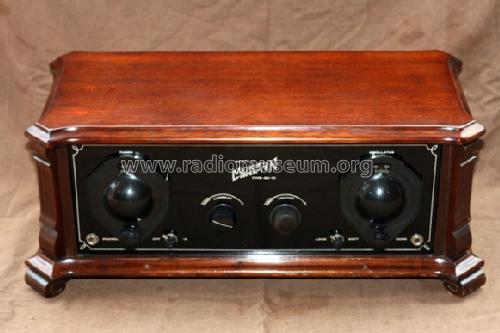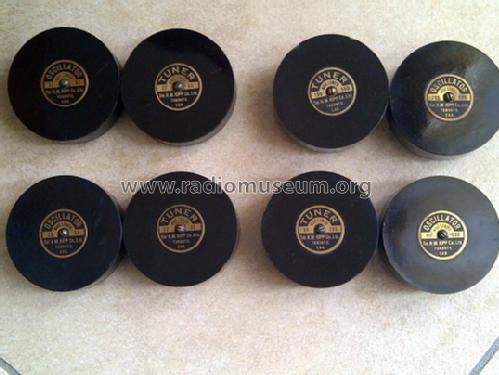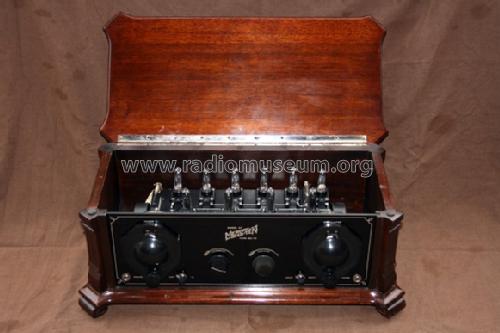Mercury Super Ten (Standard) Mercury Super 10 Renaissance cabinet
Kipp Co. Ltd., H.M.; Toronto
- País
- Canada
- Fabricante / Marca
- Kipp Co. Ltd., H.M.; Toronto
- Año
- 1925–1927
- Categoría
- Radio - o Sintonizador pasado WW2
- Radiomuseum.org ID
- 187548
- Numero de valvulas
- 10
- Principio principal
- Superheterodino en general; ZF/IF 247 kHz
- Gama de ondas
- OM (onda media) solamente
- Tensión de funcionamiento
- Baterías recargables o pilas / 6 & 60 to 135 Volt
- Altavoz
- - Este modelo usa altavoz exterior (1 o más).
- Material
- Madera
- de Radiomuseum.org
- Modelo: Mercury Super Ten Mercury Super 10 [Renaissance cabinet] - Kipp Co. Ltd., H.M.; Toronto
- Forma
- Sobremesa, caja, normalmente con tapa (panel no inclinado).
- Anotaciones
- This is a Standard model but in a luxury "Renaissance" cabinet.
All Super Ten employed 10 "Peanut" tubes - and the radio (included it's siblings) was touted as the most sensitive and selective radio in the mid 1920s. The tubes had cost an extra 30 CDN$. 4 stages of RF/IF, oscillator, 2 detectors, AF tube and 2 power output tubes. Series-parallel filament circuit for the 1.1 volt tubes on a 6 volt accumulator. Thanks to the R215A tubes the set consumes only 500 ma on the "A" battery and a max. of 20 ma on the "B" battery. If 60 volts are used no bias ("C" battery) is needed. The Mercury Super Ten has also been sold as a kit. Customers could buy a loop aerial model "A" for 23.50 CDN$, designed for the Mercury Super Ten. Several prizes were awarded to the Mercury Super Ten (Super 10) for its excellent reception properties.
You can differenciate on the front of the wooden bottom if it is a Standard or a DeLuxe model case: The standard swings to the bottom in the middle while the DeLuxe mahogany is straight, the DeLuxe walnut swings upwards. The chassis of the Mercury DeLuxe shows vernier dials and the Standard comes with a "normal" dial. The RF and oscillator coils of the DeLuxe are plug-in couls (at either end), the Standard applies fixed coils. The Mercury Super Ten was made in Toronto at the beginning of 1925. According to Robert P. Murray in "The early development of Radio in Canada" (page 113) C.A. Lowry designed the receiver, a young engineering student. The cabinets were probably made in different places because some variations exist. The "peanut tubes" were designed (1919) as reliable telephone industry repeater tubes.
- Autor
- Modelo creado por Konrad Birkner † 12.08.2014. Ver en "Modificar Ficha" los participantes posteriores.
- Otros modelos
-
Donde encontrará 9 modelos, 5 con imágenes y 5 con esquemas.
Ir al listado general de Kipp Co. Ltd., H.M.; Toronto
Colecciones
El modelo Mercury Super Ten (Standard) es parte de las colecciones de los siguientes miembros.
